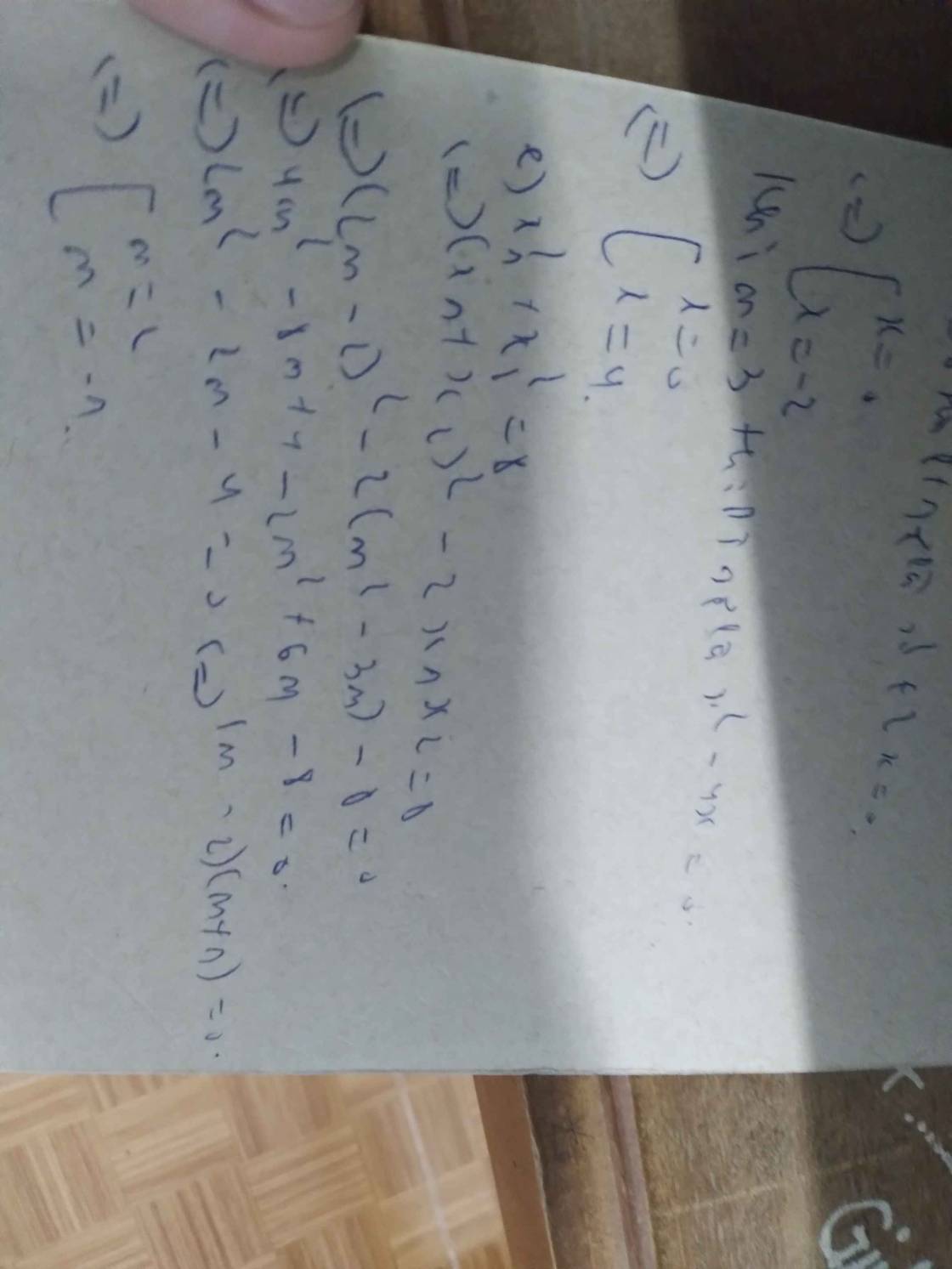1. cho pt x2 -2(m-1)x+m2-2=0
a. tìm m để pt có hai nghiệm phân biệt
b. tìm m để pt có 1 nghiệm bằng 2 và tính nghiệm còn lại
c. tìm m để pt có hai nghiệm trái dấu.
2. cho pt x2 + 2( m+1)x +m2 + 3 =0 . tìm m để
a. pt có nghiệm
b. pt có hai nghiệm dương phân biệt
c.pt có 1 nghiệm gấp đôi nghiệm còn lại
3. cho pt x2 - (m+2)x +m + 5 = 0 tìm m để
a. pt có hai nghiệm trái dấu
b. pt có hai nghiệm phân biệt
c. pt có hai nghiệm phân biệt x1 x2 thỏa x12 + x22 =23
d. pt có hai nghiệm âm phân biệt
4. cho pt mx2 - 2(m+7)x + m -4=0 tìm m để
a. pt có 1 nghiệm
b. pt có hai nghiệm phân biệt thỏa x1x2 - 4 = 2x1 + 2x2.
mọi người giúp em với mai em phải kiểm tra rồi . em cảm ơn
























